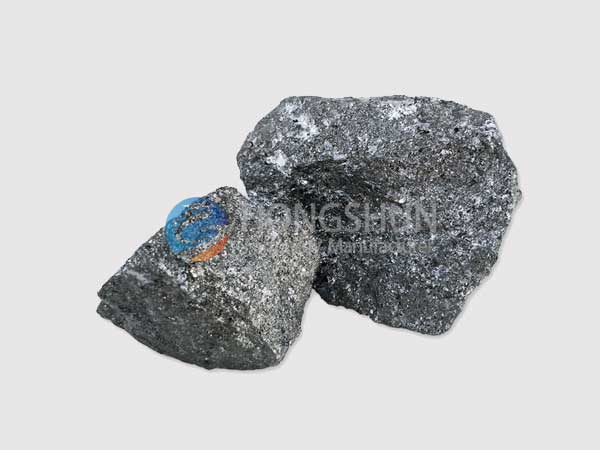High Carbon Silicon as Ferrosilicon Substitute: A Strategic Move in Metallurgy
In the evolving world of metallurgy and steel production, the search for cost-effective and efficient alternatives to traditional alloys has become a top priority. One material gaining increasing attention is High Carbon Silicon (HC Silicon), particularly for its use as a substitute for ferrosilicon. This article explores its metallurgical value, technical advantages, cost efficiency, and growing global demand, especially in regions focused on low-carbon and energy-saving production.
What Is High Carbon Silicon?
High Carbon Silicon is a silicon carbon alloy that contains 65–72% silicon and 15–24% carbon, along with trace elements such as iron, aluminum, and calcium. It is typically a by-product of the silicon metal or ferrosilicon production process, yet its chemical composition makes it an effective deoxidizer and alloying agent.
Unlike standard ferrosilicon—which contains 70–75% silicon and 15–25% iron—high carbon silicon provides an alternative with both reducing and carburizing properties, making it suitable for applications in converter steelmaking, induction furnaces, and foundries.

Why Replace Ferrosilicon with High Carbon Silicon?
1. Cost Efficiency
The primary reason manufacturers turn to high carbon silicon is economic. The production cost of HC Silicon is lower than that of ferrosilicon due to:
Simpler smelting techniques
Lower-grade raw material usage
Recovery from silicon slag or other silicon by-products
This cost advantage can reduce alloying costs by 10–20%, depending on market pricing and usage volumes.
2. Similar Metallurgical Properties
High carbon silicon performs many of the same metallurgical functions as ferrosilicon:
Deoxidization: Silicon reacts with oxygen in molten steel to reduce inclusions.
Alloying: It adds silicon to improve steel’s strength and hardness.
Carburizing: The carbon content helps to adjust the carbon composition of steel, useful in carbon steel production.
Because of these overlapping functions, HC Silicon can replace FeSi 75, FeSi 72, or even FeSi 70 in specific production conditions without affecting product quality.
3. Environmental and Energy Benefits
In line with global trends toward low-carbon production, high carbon silicon provides an alternative that:
Reduces dependency on iron ore resources (Fe content is lower than in FeSi)
Minimizes energy consumption in secondary refining
Can be produced using silicon slag recycling, which supports a circular economy
Applications of High Carbon Silicon in Metallurgy
1. Converter Steelmaking
In basic oxygen furnaces (BOF), high carbon silicon is used to:
Deoxidize molten steel
Adjust the carbon and silicon levels simultaneously
Improve recovery rate of other alloying elements
This substitution is especially advantageous in low-silicon steel grades where precise control of chemical composition is needed.
2. Induction Furnace and Electric Arc Furnace (EAF)
Foundries using induction furnaces often face tight budgets. HC Silicon provides:
Cost-effective silicon addition
Dual function as a silicon and carbon provider
Cleaner slag and reduced consumption of auxiliary materials
3. Casting and Foundry Industry
For iron casting, particularly in ductile and gray iron, high carbon silicon is used to:
Replace both ferrosilicon and carburizers
Achieve uniform microstructure
Lower slag formation and gas porosity
Chemical Composition of High Carbon Silicon
| Element | Typical Content (%) |
|---|---|
| Silicon (Si) | 65–72 |
| Carbon (C) | 15–24 |
| Iron (Fe) | 3–5 |
| Aluminum (Al) | ≤2 |
| Calcium (Ca) | ≤1.5 |
These values may vary depending on the producer. Manufacturers such as HSferroalloy offer customized HC Silicon with specific particle sizes (e.g., 0-3mm, 3-10mm, 10-50mm) and compositions tailored to customer needs.
Market Trends and Regional Demand
China and Southeast Asia
In China’s steel sector, especially in Yunnan, Guizhou, and Inner Mongolia, HC Silicon is already recognized as a mainstream ferrosilicon substitute. The One Belt One Road initiative has also boosted exports of HC Silicon to Southeast Asian countries looking to expand their steel capacity while keeping costs low.
Middle East and Africa
Rapid infrastructure development in these regions has increased the demand for affordable construction steel. HC Silicon, due to its value-for-money performance, is being adopted by steel mills and foundries to remain competitive.
How to Choose a Reliable Supplier of High Carbon Silicon
When choosing HC Silicon for industrial use, consider suppliers who provide:
Guaranteed chemical analysis
Stable composition (no product adulteration)
Competitive pricing
On-time delivery
Custom packaging and sizing
HSferroalloy, for instance, offers high-purity HC Silicon with consistent quality and long-term supply contracts tailored for both domestic and international clients.
Is High Carbon Silicon a Viable Substitute for Ferrosilicon?
The answer is a clear yes. High Carbon Silicon has proven itself as an effective, economical, and environmentally sound replacement for ferrosilicon in various metallurgical applications. Its dual functionality, lower cost, and adaptability make it especially appealing in today’s cost-conscious and sustainability-focused steel industry.
As steelmakers continue to seek competitive advantages, high carbon silicon will play an increasingly important role in alloy design and process optimization. For forward-looking manufacturers, it is not just an alternative—it’s a strategic upgrade.


